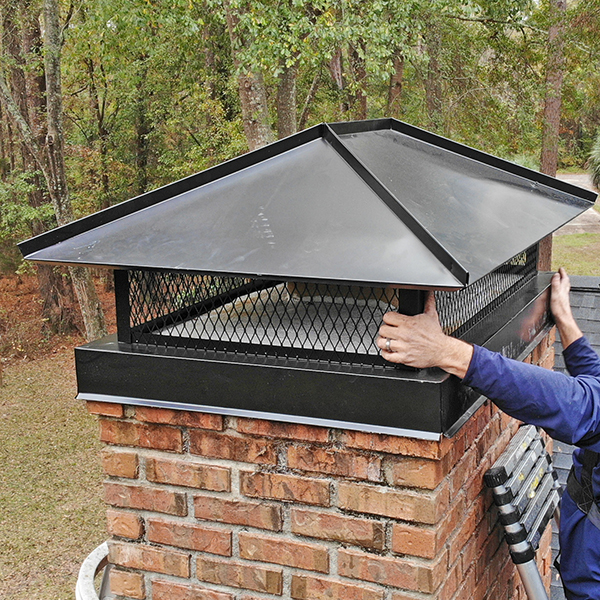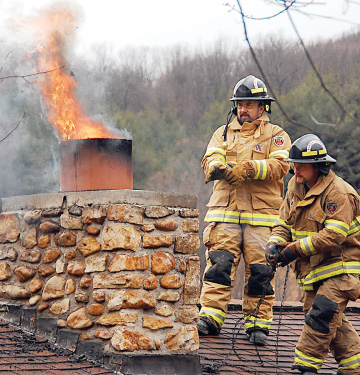Your chimney is an essential safety apparatus that vents smoke and exhaust when using the fireplace or heating stove to keep your family warm and comfy. Many chimneys lack a chimney cap, which means they have an open flue exposing the chimney to rain, wind, pests, and debris that can damage the interior masonry, reduce the heating efficiency, and increase the likelihood of dangerous downdrafts.
 What is a Chimney Cap?
What is a Chimney Cap?
A chimney cap is an accessory on top of the chimney. It covers the flue opening while allowing the exhaust to vent into the atmosphere. There are numerous benefits to installing a chimney cap.
Prevents Water Intrusion
One of the biggest reasons for installing a chimney cap is to prevent water intrusion. Water is incredibly destructive to chimneys and can cause extensive damage to interior masonry walls, flue liner, damper, and other components. Water damage can make your fireplace or heating stove unsafe to operate, resulting in expensive repairs. It can also promote mold and bacteria growth, which can be potentially harmful to your health.
Keep Out Pests and Debris
The chimney is often the highest point of a home. High winds can blow leaves, twigs, and debris from nearby trees into an exposed flue. Small animals and pests can also climb a chimney as easily as climbing a tree where they can curiously enter the flue. Once inside, they often perish, unable to climb out. Decaying organic matter can cause foul odors and attract pests. It is also a health hazard because when the flue is partially or entirely clogged, it restricts the venting of dangerous gases. Instead of exiting the chimney, smoke and fumes may be forced down the vent, causing smoke, soot, and hot ashes to be pushed out of the fireplace.
Protects Chimney Liner
A chimney cap also plays an integral role in protecting the chimney liner and extending its useful life. Moisture and debris that get in the chimney through an exposed flue can damage the liner requiring more frequent repairs and early replacement. A damaged chimney liner also increases the risk of fire and exposure to toxic carbon monoxide fumes.

Fire Prevention
A roaring wood-burning fireplace fire is a stunning sight, but sparks from hot embers flying around the flue can be a fire hazard if it flies out the chimney and lands on the roof or nearby brush. A chimney cap with a spark arrestor will prevent sparks from escaping the chimney, reducing fire risk.
Reduces Downdrafts
Windy days can be a severe problem for chimneys without a chimney cap. A gust of wind can blow cold air down the chimney causing a dangerous downdraft that forces smoke and exhaust into your living space. Installing a chimney cap will help prevent this and improve the chimney draft for more efficient heating.
Chimney caps are available in a wide variety of styles, sizes, and materials. Since a chimney cap that is the wrong size or incorrectly installed will defeat its purpose, always contact a chimney professional to help you select and install the right chimney cap for your chimney.



